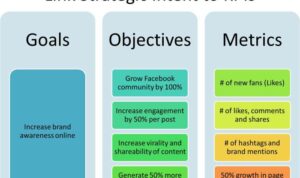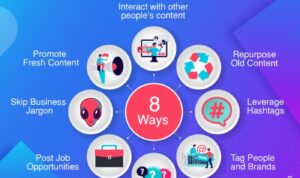Creating Mobile-Friendly Content sets the stage for success in our mobile-driven world, where connectivity is key. Get ready to dive into the realm of mobile optimization with tips and tricks that will keep your audience hooked on every scroll.
Let’s explore the ins and outs of adapting your content for mobile devices to ensure maximum impact and reach.
Importance of Mobile-Friendly Content
In today’s fast-paced digital world, having mobile-friendly content is more important than ever. With the increasing use of smartphones and tablets, it is crucial for businesses and websites to optimize their content for mobile devices to reach a wider audience and stay competitive in the market.
Mobile devices have become the primary source of online activities for many users. According to recent statistics, more than 50% of global internet traffic comes from mobile devices. This trend is only expected to grow in the coming years as mobile technology continues to advance.
Creating mobile-friendly content not only ensures that your website is accessible to a larger audience but also improves user experience and engagement. Mobile users expect websites to load quickly, be easy to navigate, and provide relevant information in a format that is easy to read on smaller screens. By optimizing your content for mobile devices, you can enhance user satisfaction and encourage them to spend more time on your site.
Enhanced User Experience
- Responsive design ensures content adapts to different screen sizes
- Improved website speed leads to lower bounce rates
- Easy navigation enhances user engagement
Best Practices for Creating Mobile-Friendly Content

When it comes to creating content for mobile devices, there are some key best practices that can help ensure a seamless user experience. From optimizing content for smaller screens to focusing on fast loading times, here are some tips to keep in mind.
Optimizing Content for Smaller Screens
Creating mobile-friendly content involves adjusting the layout and design to fit smaller screens without sacrificing readability. Use larger fonts, concise text, and images that are optimized for mobile viewing. Avoid cluttered layouts and unnecessary elements that can overwhelm the user on a smaller screen.
Importance of Responsive Design
Responsive design is crucial for ensuring that your content looks great and functions well on any device, regardless of screen size. By using responsive design techniques, you can create a consistent experience for users across different devices, improving mobile usability and engagement.
Significance of Fast Loading Times
Mobile users expect content to load quickly, or they may lose interest and move on. Optimizing images, minimizing redirects, and using browser caching are just a few ways to improve loading times for mobile content. A fast-loading website not only improves user experience but also positively impacts search engine rankings.
Mobile Strategies: Creating Mobile-Friendly Content

In today’s digital landscape, optimizing your content for mobile devices is essential to reach a wider audience and improve your search engine rankings. Mobile strategies focus on making your content easily accessible and user-friendly on smartphones and tablets. Let’s dive into some techniques for optimizing mobile content for search engines and discuss the importance of local for mobile-friendly content.
Optimizing Mobile Content
- Ensure your website is mobile-responsive to provide a seamless user experience across all devices.
- Optimize your website speed for mobile users by compressing images, minifying CSS and JavaScript, and leveraging browser caching.
- Focus on creating high-quality, engaging content that is easy to read and navigate on smaller screens.
- Use relevant s and meta tags optimized for mobile search to improve your visibility in mobile search results.
Differences Between Traditional and Mobile
- Mobile prioritizes a responsive design and fast loading times to cater to on-the-go users.
- Traditional focuses on desktop search results and may not consider the unique needs of mobile users.
- Mobile takes into account user behavior and intent on mobile devices, such as voice search and local search queries.
- Traditional strategies may not fully address the importance of mobile optimization for ranking in mobile search results.
Importance of Local for Mobile-Friendly Content
- Local helps businesses target customers in specific geographic locations, making it crucial for mobile users searching for nearby products or services.
- Optimizing for local search can improve your visibility in Google Maps and local search results, increasing foot traffic to your physical store.
- Mobile users often use their devices to find businesses or services nearby, making local a key component of mobile marketing strategies.
- By incorporating local s and location-based information in your mobile content, you can attract local customers and drive conversions.
Visual Content for Mobile
Visual content plays a crucial role in engaging mobile users as it helps to capture their attention quickly and convey information effectively. Creating visually appealing yet lightweight images and videos is essential to ensure fast loading times and a smooth user experience on mobile devices. Optimizing visual content for different screen sizes is also important to guarantee that it is displayed correctly and maintains its quality across various devices.
Tips for Creating Visually Appealing Content, Creating Mobile-Friendly Content
- Avoid using large, high-resolution images that can slow down loading times. Opt for smaller file sizes while maintaining quality.
- Use responsive design techniques to ensure that images and videos adapt to different screen sizes without losing clarity or cropping important content.
- Optimize images for mobile by compressing them without compromising on quality. Consider using tools like Adobe Photoshop or online image compressors.
- Choose simple yet impactful visuals that are easy to understand and resonate with your target audience.





